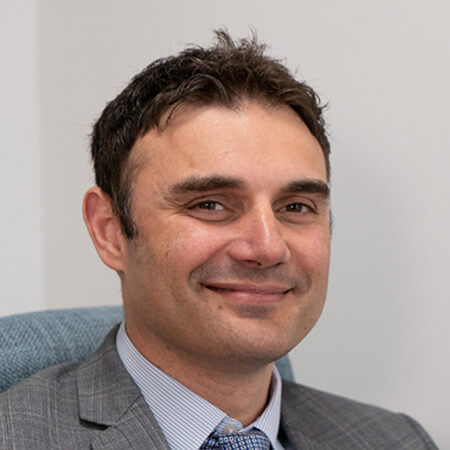Back Pain
Back pain is one of the most commonly seen problems and most people will suffer from back pain at some point in their lives. This can originate from the joints, muscles, nerves, or other structures in the spine and back pain can encompass a range of conditions or be termed as “mechanical back pain” where no specific cause is found.

Back pain symptoms
- Pain – a dull constant ache or a sharp sudden pain
- Pain confined to the area
- Pain that spreads or radiates to somewhere else
- Weakness
- Pins and needles
- Numbness
Back Pain Diagnosis
A spine specialist will take a medical history of the symptoms and perform a physical examination of the spine. Further tests such as an X-ray, CT scan or MRI
scan of the spine may be organised.
Treatment options
In a consultation a specialist spine consultant will talk through the options depending upon the cause of the back pain. Conservative measures may be advised, or pain relief injections, or an operation may be recommended.
Pain injections
Throughout the entire spine there are joints called facet joints. These joints are located in pairs along the posterior (back) of the spinal column but are not very close the actual spinal cord.
These joints are small and somewhat fragile and are prone to injury in certain types of traumatic, inflammatory or degenerative conditions. They also have a nerve supply that carries these pain signals, which is how we register pain from these facet joints.
The nerve that supplies the facet joints is called the medial branch nerve. Unfortunately the joints themselves cannot be repaired or replaced surgically. However, the nerve supply (medial branch nerve) to the joint can be ‘interrupted’ to reduce the amount of pain being felt. This is what these procedures attempt to do to help you with your back/neck pain.
Diagnostic Medial Branch (facet nerve) Blocks
In both the cervical (neck) and the lumbar (lower back) regions the facet medial branch nerve is blocked with local anaesthetic (numbing medication). This procedure allows you and your doctor to assess the role that these joints play in your pain problem. If your pain is made significantly better for a temporary period after the diagnostic nerve block that may mean that the joint is responsible for your pain.
Sometimes you may experience long lasting pain relief after these injections. Whilst this is relatively rare, if this is the case, then no further treatment is required.
Performing the Diagnostic Medial Branch Blocks
During the procedure you will be placed on an examination table in the procedure suite. The doctor will use fluoroscopy (x-ray) to locate the appropriate place for the block. A local anaesthetic will be used to numb your skin. After that a sterile needle will be placed under X-ray guidance into the vicinity of the medial branch nerve. When positioning of the needle is acceptable, a small amount of local anaesthetic will be injected.
You may experience some discomfort during the procedure but your doctor will be as gentle as possible. Remember that you are in charge and my request a pause if you feel that it is necessary. Typically, you will receive little or no sedation during this part of the procedure. This is important because the sedation medications will interfere with the interpretation of the results of the procedure. You will be under the care of your doctor performing the procedure and a nurse will closely monitor you during the procedure.
If your pain is not affected by the diagnostic block, it may be that the facet joints are not responsible for your pain. In this case, you and your doctor will need to consider what alternative treatment options are available to help you with your pain.
Radiofrequency Denervation of the Facet Joint Medial Branch Nerves
If you have had a positive diagnostic block medial branch block (i.e. your back/neck pain improved by more than 50%) and your pain levels return, you and your doctor may elect to try a longer term solution.
The nerve to the facet joints can be destroyed by the use of a special technique called radiofrequency denervation. In this technique, a special needle is placed under x-ray guidance. When the needle is in the correct position, it is attached to the radiofrequency generator. The generator gives your doctor the ability to verify the position of the needles in relationship to the nerves in the area. When your doctor is sure the location is appropriate, at this stage, the radiofrequency generator will be used to heat the tissue at the end of the needle. This will destroy the nerve that supplies the facet joint.
If necessary, this procedure will be repeated at several spinal levels as determined by the results of your diagnostic blocks.
Goals of Facet Denervation
This procedure is not designed to eliminate all of your pain. Unfortunately, that result is not usually a realistic expectation. However, it may substantially reduce the pain that you experience directly due to your facet joints. This will allow you to perform physical therapy that you were previously unable to do. This post –procedural physical therapy is very important to your recovery and is generally different than physical l therapy that you have done previously.
Common Questions and Concerns
1. My pain relief was only temporary after diagnostic block, is that failure?
No. The diagnostic blocks may or may not produce long lasting pain relief. It is generally difficult to predict. They are mostly designed to find out if temporary reduction of the nerve function results in temporary relief of pain. If blocks are effective for some time but pain persists, it may be appropriate to try a denervation procedure.
2. Isn’t it bad to destroy nerve? Don’t I need them?
Generally speaking, yes. However, there is very little risk with this destructive procedure. The medial branch facet nerve is a minor nerve that only supplies the joint and a small muscle that my also be responsible for your pain.
3. Will the nerve grow back?
Yes, in 12-18 months on average the nerve will generally grow back. Since the radiofrequency lesion does not physically disrupt the nerve like a scalpel would, the regenerating nerve will not create a neuroma (another painful condition). When the nerve grows back, the discomfort may return but not necessarily. If the discomfort does return, it is then safe to perform further denervation procedures.
Surrey Orthopaedic Clinic Spine & Back Pain Specialists:




